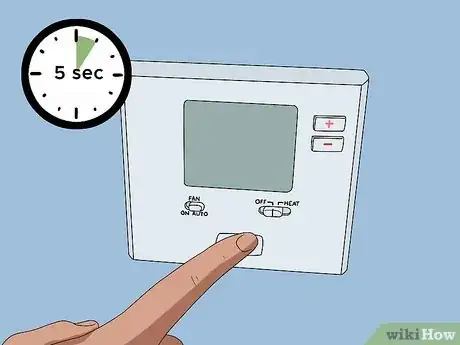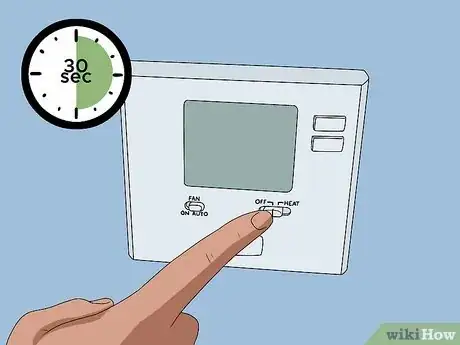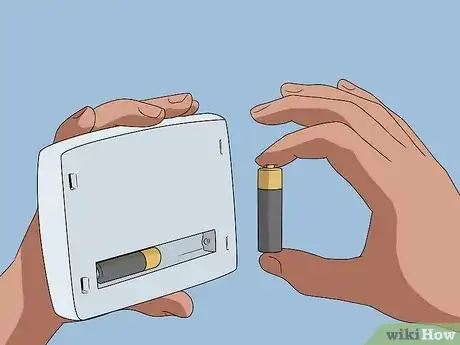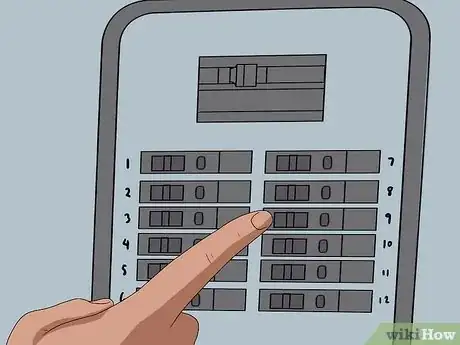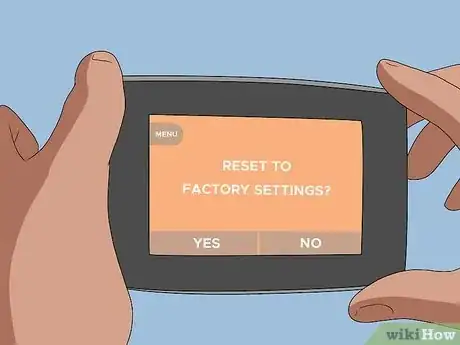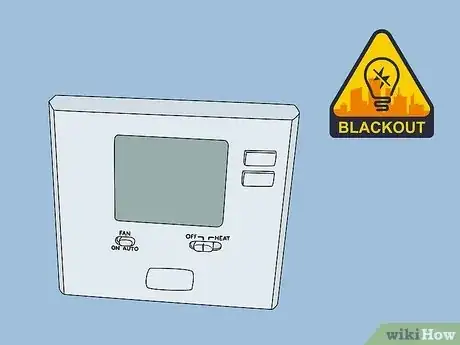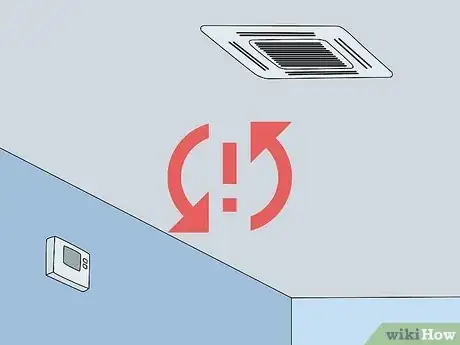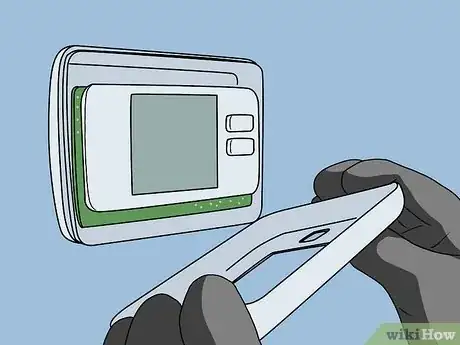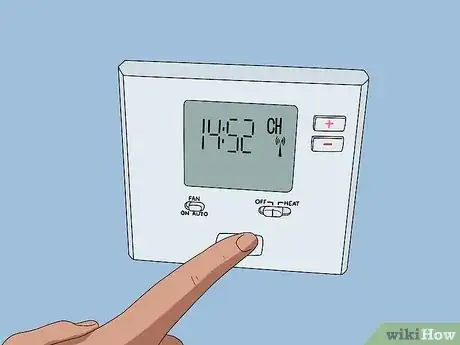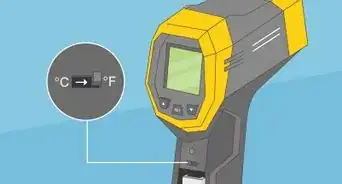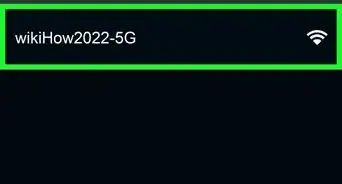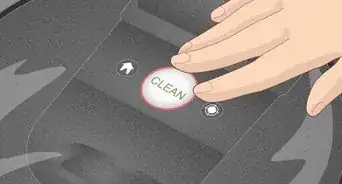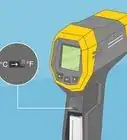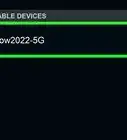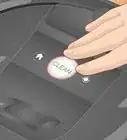This article was co-authored by wikiHow staff writer, Luke Smith, MFA. Luke Smith is a wikiHow Staff Writer. He's worked for literary agents, publishing houses, and with many authors, and his writing has been featured in a number of literary magazines. Now, Luke writes for the content team at wikiHow and hopes to help readers expand both their skillsets and the bounds of their curiosity. Luke earned his MFA from the University of Montana.
This article has been viewed 1,155 times.
Learn more...
The last thing you need in a hot summer or long, cold winter is a thermostat that can’t seem to get a clue. Your house is freezing, or else it’s a full-on swelter, and you’ve got the sneaking suspicion it’s time to give the thermostat the ol’ reset. But then… how, exactly? There are as many ways to reset a thermostat as there are thermostats on the market, which is to say: The best way to figure out your particular unit is by consulting the instruction manual. The second best way is to read our handy guide! We’re here with the most common methods on how to reset most thermostats, how often you ought to be resetting yours, plus some tips and troubleshooting for the real tough cases.
Things You Should Know
- Locate and hold the reset button for about 5 seconds, or power your thermostat off for 30 seconds before turning it back on.
- Change dead batteries in your thermostat, or flip the orientation of the batteries for about 5 seconds while the thermostat is turned off.
- Flip your circuit breaker and leave it off for about 30 seconds before restoring power to your home’s HVAC.
- Clean and reset your thermostat every few months to keep it calibrated and working properly.
Steps
Common Ways to Reset a Thermostat
-
1Hold the reset button down for 5 seconds. Most thermostats have a dedicated reset button. It’s not always in an obvious position—check the edges of the thermostat, or even take it off the wall and examine the back. Often, the reset button is small and recessed, so use a paperclip or push-pin to press and hold the button for at least 5 seconds, or until the thermostat appears to reset.[1]
- After you’ve reset your thermostat, set it to your desired temperature and monitor your home’s HVAC system for any changes.
-
2Turn your thermostat off for 30 seconds. Move the power switch to the off position, or hold the power button until the thermostat’s display goes blank. Then, leave the thermostat off for 30-60 seconds, to give it time to cycle and “forget” its prior settings. Then, turn the thermostat back on.[2]Advertisement
-
3Change or flip the batteries. A battery-powered thermostat might be reset simply by changing the batteries. Otherwise, try flipping them. It may sound strange, but many battery-powered thermostats can be reset by removing the batteries, and sticking them in backwards. Leave them there for 5-10 seconds (while the thermostat is still off), then replace them in their proper orientation, and turn the thermostat back on.[3]
- This method often works for programmable thermostats.
-
4Flip your breaker. Your HVAC system may be connected to your home’s circuit breaker (and even if it’s not, it can’t hurt to try this method). Turn off the thermostat and find your breaker box—they’re often in a utility room or outside around the back of your home—and flip the switch that coincides with the room that houses your thermostat, or which controls the HVAC in particular. Wait at least 30 seconds, then flip it back on. Finally power your thermostat back on.[4]
- This method often works for digital thermostats.
-
5Reset a smart thermostat in the settings menu. Modern thermostats are often controlled via software on the thermostat itself, or via an app on your phone. To reset these, navigate to the thermostat’s settings menu, then select the “factory reset” option and follow the instructions on the screen to complete the reset.[5]
-
6Call an electrician or an HVAC specialist. There are many kinds of thermostats on the market, and resetting the thermostat in your home might not be as simple as flipping a switch. If you’re stumped, it’s best to call a professional to help you get your home’s cooling and heating systems back on track.[6]
- You can also find many digital manuals for a variety of thermostats on sites like ManualsLib.
When to Reset a Thermostat
-
1Reset your thermostat after a power outage. After a power outage, your thermostat may not properly calibrate to the room temperature. Help your thermostat “catch up” by giving a quick reset. Many thermostats are more responsive as they boot up and recalibrate after a reset.[7]
-
2Reset your thermostat when it’s out of sync with your home’s HVAC. Sometimes your thermostat loses touch with the rest of your home’s systems, and is slow to respond to the rest of your home’s heating and cooling system. This causes the AC or heating to run too long, or to not run at all. A reset may be just what’s needed to get things back in order.[8]
-
3Reset your thermostat every few months. Like any piece of electronic hardware, your thermostat’s calibration might drift off-course over long periods of time. It’s best to help it correct itself by performing a reset, so that it remains accurate and reliable.[9]
Troubleshooting
-
1Clean your thermostat. Remove your thermostat cover (most simply pop off, but you may need to remove some screws first), then loosen any dust or debris around the wiring and button interfaces with a soft brush, or by wiping it gently with a cloth or wipe. Then, use a small vacuum, or a vacuum brush attachment, to suck up the debris.[10]
- Clean your thermostat every couple years to keep it in operating condition.
- If you see any corroded wires or other damaged electrical parts, call an electrician to help repair your unit.
-
2Test your dead thermostat’s power intake if it’s not turning on. Strip one end of an insulated copper wire to expose 0.5 in (1.3 cm) of wire. Then, wearing safety gloves, remove your thermostat’s cover and touch the exposed copper wire to the terminals marked “R” and “W.” If touching either of these turns on your thermostat, it means your thermostat’s power intake is faulty, and the unit needs to be replaced.[11]
- If nothing happens when you touch the copper wire to either terminal, consult an electrician—your problem is probably with your home’s wiring, not the thermostat, or it may be time to replace your thermostat.
-
3Adjust your mechanical thermostat’s activation frequency. Sometimes, a mechanical thermostat won’t turn on because its heat anticipator doesn’t read the current temperature of the room correctly. To fix this, remove your thermostat’s cover and identify the anticipator—often a sort of dial or pointer overlaid onto a numbered scale. Then, use a pencil eraser or other non-conductive object to move the pointer slightly away from the side indicated as “longer.” This will place your thermostat on a shorter cycle.
- Alternatively, if your thermostat is running too often, move the dial toward the “longer” side of the scale. You may need to do some trial and error to find a comfortable frequency.[12]
References
- ↑ https://applianceanalysts.com/reset-thermostat/
- ↑ https://applianceanalysts.com/reset-thermostat/
- ↑ https://applianceanalysts.com/reset-thermostat/
- ↑ https://applianceanalysts.com/reset-thermostat/
- ↑ https://www.manualslib.com/manual/812458/Energate-Pioneer-Z100-Smart-Thermostat.html?page=42#manual
- ↑ https://www.latimes.com/archives/la-xpm-1994-01-29-hm-18310-story.html
- ↑ https://www.chasroberts.com/reset-thermostat-power-outage/
- ↑ https://applianceanalysts.com/reset-thermostat/
- ↑ https://applianceanalysts.com/reset-thermostat/
